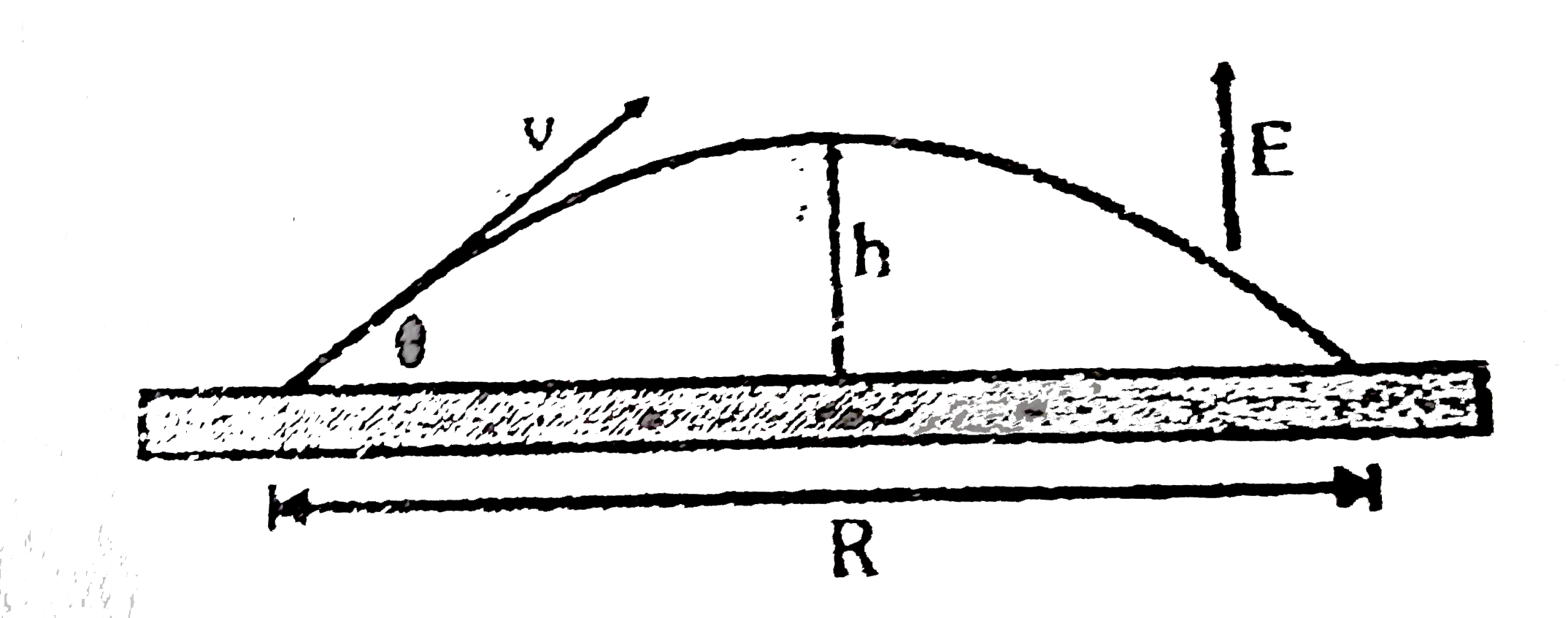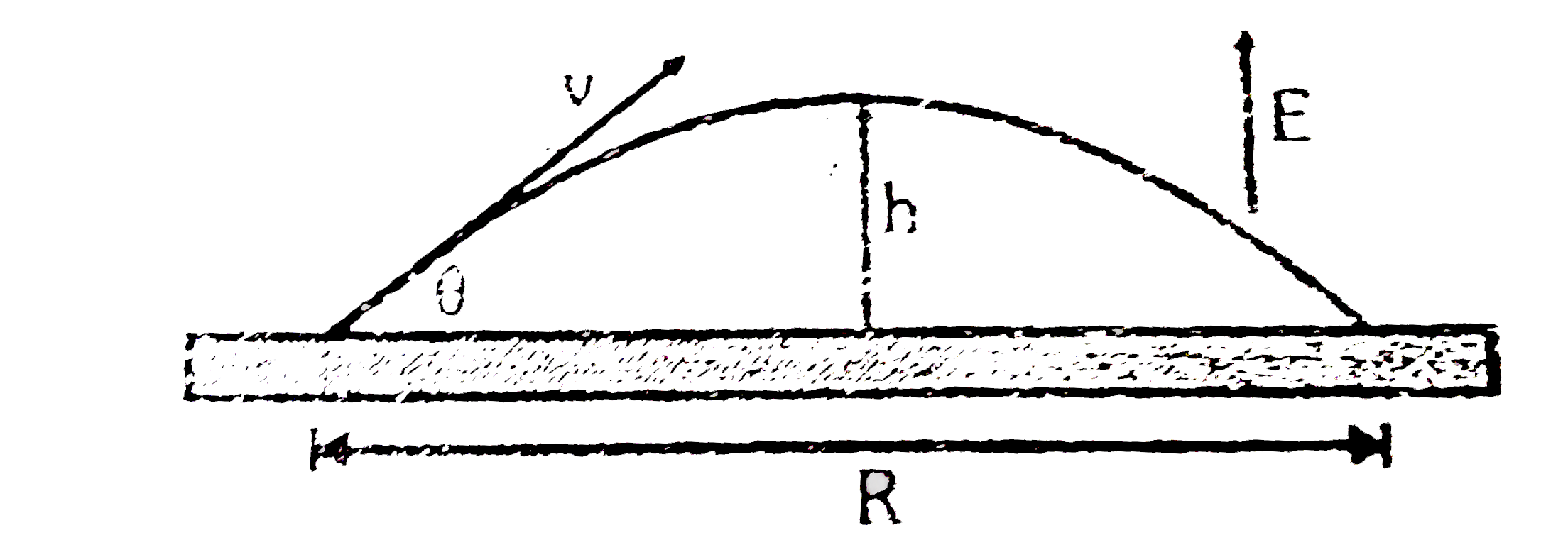Assertion (A) : Electromagnetic force is enormously strong as compared to gravitational force. Yet, gravity domination in the large - scale phenomena (e.g. formation of galaxies).
Reason (R ) : Existence of positive and negative charges make matter mostly electrically neutral.
Which of the following is true?
Both (A) and (R ) are true and (R ) is the correct explanation of (A)
Both (A) and (R ) are true, but (R ) is not the correct explanation of (A)
(A) is true, but (R ) is false
(A) is false, but (R ) is true
The correct Answer is:A
Topper's Solved these Questions
- EAMCET - 2018 (TS) SHIFT - 2BOOK - SIA PUBLICATIONCHAPTER - EAMCET - 2018 (TS) SHIFT - 2EXERCISE - Chemistry
18 Videos
- EAMCET - 2018 (TS) SHIFT - 2BOOK - SIA PUBLICATIONCHAPTER - EAMCET - 2018 (TS) SHIFT - 2EXERCISE - Chemistry
18 Videos
- EAMCET - 2018 (TS) SHIFT - 1BOOK - SIA PUBLICATIONCHAPTER - EAMCET - 2018 (TS) SHIFT - 1EXERCISE - EXERCISE - Chemistry
8 Videos
- EAMCET -2016 (AP)BOOK - SIA PUBLICATIONCHAPTER - EAMCET -2016 (AP)EXERCISE - CHEMISTRY
3 Videos
Similar Questions
A : Gravitational force dominates terrestrial phenomena.
R : Matter is mostly electrically neutral and gravitational force are only of attractive nature.
View SolutionA very large, charged plate floats in deep space. Due to the charge on the plate, a constant electric field E exists everry above the plate. An object with mass m and charge -q is shot upward from the plate with a velocity v and at an angle θ. It follows the path shown reaching a height h and a ramge R. Assume the effects of gravity to be negligible.

Which of the following is true concerning all objects the path shown when propelled with a velocity v at an angle θ?
View Solution
Knowledge Check
A : Gravitational force dominates terrestrial phenomena.
R : Matter is mostly electrically neutral and gravitational force are only of attractive nature.AIf both Assertion & Reason are true and the reason is the correct explanation of the assertion, then mark (1).BIf both Assertion & Reason are true but the reason is not the correct explanation of the assertion, then mark (2).CIf Assertion is true statement but Reason is false, then mark (3).DIf both Assertion and Reason are false statements, then mark (4).II. Read the following text and answer the following questions on the basis of the same:
Grand Unification Theory :
There are four fundamental forces in the universe:
• Gravitational force
• Electromagnetic force
• The weak nuclear force
• The strong nuclear force
The weak and strong forces are effective only over a very short range and dominate only at the level of subatomic particles.
Gravitational force and Electromagnetic force have infinite range.
The Four Fundamental Forces and their strengths
(i) Gravitational Force - Weakest force, but has infinite range.
(ii) Weak Nuclear Force - Next weakest, but short range.
(iii) Electromagnetic Force -Stronger, with infinite range.
(iv) Strong Nuclear Force - Strongest, but short range.
Unification :
• The weak nuclear force and electromagnetic force have been unified under the Standard Electroweak Theory, (Glashow, Weinberg and Salaam were awarded the Nobel Prize for this in 1979).
•Grand unification theories attempt to treat both strong nuclear force and electroweak force under the same mathematical structure.
• Theories that add gravitational force to the mix and try to unify all four fundamental forces into a single force are called Superunified Theories. It has not yet been successful.
Which of the following forces have infinite ranges?AWeak nuclear force and strong nuclear forceBGravitational force and Electromagnetic forceCWeak nuclear force and Gravitational forceDAll the forcesAn organic reaction occurs through making and breaking of bonds. The breaking of bonds may occur either homolytically leading to the formation of radicals or heterolytically generating positively and negatively charged species. The neutral species (free radicals, carbenes, nitrenes, etc.) and positively charged species being electron deifcient are collectively called electrophiles while neutral and negatively charged species which are electron rich are called nucleophiles. An organic reaction usually involves the attack of a reagent (radicals, positively and negatively charged species) on the substrate molecule). The substrate molecule, although as a whole electrically neutral, has centres of low and high electron density due to displacement of bonding electrons. These electrons displacements occur through inductive, electromeric occur through inductive, electromeric, resonance and hyperconjugation effects. Whereas inductive effects involve displacement transfer of n-and π-electrons along a conjugated system. Hypercongation effects, on the other hand, involve σ−π-conjugation. Both inductive and hyperconjugation effects can be used to explain the stability of carbocations and free radicals which follow the stability order: 3∘>2∘>1∘. The stability of carbanions, however, follows opposite order.
The stability of a molecule can be judged on the basis of contribution of its resonance structures. Resonance structures have same position of nuclei and have same number of unpaired electrons. Among resonance structures, the one which has greater number of covalent bonds, has less separation of opposite Charges, a negative charge on more electronegative and a positive charge on a more electropostive atom are more stable than others.
Which of the following series contains only electrophiles ?AH2O,SO3,H3O+BNH3,H2O,AlCl3CAlCl3,SO3,+NO2DH2O,+Cl,NH3
A very large, charged plate floats in deep space. Due to the charge on the plate, a constant electric field E exists everry above the plate. An object with mass m and charge -q is shot upward from the plate with a velocity v and at an angle θ. It follows the path shown reaching a height h and a ramge R. Assume the effects of gravity to be negligible.

Which of the following is true concerning the flight of the projectile shown?
View SolutionThe electronic displacements in covalent bonds may occur either in the ground state under the influence of an atom or a substituent group or in presence of an appropriate attacking reagent. As a result of these electron displacements, centres of different electron densities are created and these centres are susceptible to attack by the reagents. These electron displacements occur through inductive electromeric, resonance and hyperconjugation effects. Whereas inductive effect involves displacement of σ-electrons towards the substituent, resonance effect involves delocalization of π−electrons transmitted through the chain and both are permanent effect. Electromeric effect is the complete transfer of a shared pair of π- electrons to one of the atoms joined by a multiple bond on the demand of an attacking reagent. Hyperconjugation effects on the other hand involve delocalization of σ-electrons of C−H bond of an alkyl group directly attached to an atom of unsaturated system (i.e., σ−π-conjugation). Both inductive and hyperconjugation effects can be used to explain the stability of carbocations and free radicals which follow the stability order : 3∘>2∘>1∘. The stability or carbanions, however, follows the reverse order.
An organic reaction occurs through making and breaking of bonds. The breaking of a covalent bond may occur either homolytic leading to the formation of free radicals or heterolytic forming positively (carbocations) or negatively (carbanions) charged species. Most of the attacking reagents carry either a positive or a negative charge. The positively charged species with electron deficient centre or neutral species (free radicals, carbenes, nitrene) are collectively called electrophiles, while negatively charged species with electron rich centre or neutral species (like water, alcohol, ammonia, etc.) are called nucleophiles.
Which of the following is most stable cation?
View SolutionAn organic reaction occurs through making and breaking of bonds. The breaking of bonds may occur either homolytically leading to the formation of radicals or heterolytically generating positively and negatively charged species. The neutral species (free radicals, carbenes, nitrenes, etc.) and positively charged species being electron deifcient are collectively called electrophiles while neutral and negatively charged species which are electron rich are called nucleophiles. An organic reaction usually involves the attack of a reagent (radicals, positively and negatively charged species) on the substrate molecule). The substrate molecule, although as a whole electrically neutral, has centres of low and high electron density due to displacement of bonding electrons. These electrons displacements occur through inductive, electromeric occur through inductive, electromeric, resonance and hyperconjugation effects. Whereas inductive effects involve displacement transfer of n-and π-electrons along a conjugated system. Hypercongation effects, on the other hand, involve σ−π-conjugation. Both inductive and hyperconjugation effects can be used to explain the stability of carbocations and free radicals which follow the stability order: 3∘>2∘>1∘. The stability of carbanions, however, follows opposite order.
The stability of a molecule can be judged on the basis of contribution of its resonance structures. Resonance structures have same position of nuclei and have same number of unpaired electrons. Among resonance structures, the one which has greater number of covalent bonds, has less separation of opposite Charges, a negative charge on more electronegative and a positive charge on a more electropostive atom are more stable than others.
For 1-methoxy-1, 3-butadiene, which of the following resonating structure is the least stable ?
View SolutionAn organic reaction occurs through making and breaking of bonds. The breaking of bonds may occur either homolytically leading to the formation of radicals or heterolytically generating positively and negatively charged species. The neutral species (free radicals, carbenes, nitrenes, etc.) and positively charged species being electron deifcient are collectively called electrophiles while neutral and negatively charged species which are electron rich are called nucleophiles. An organic reaction usually involves the attack of a reagent (radicals, positively and negatively charged species) on the substrate molecule). The substrate molecule, although as a whole electrically neutral, has centres of low and high electron density due to displacement of bonding electrons. These electrons displacements occur through inductive, electromeric occur through inductive, electromeric, resonance and hyperconjugation effects. Whereas inductive effects involve displacement transfer of n-and π-electrons along a conjugated system. Hypercongation effects, on the other hand, involve σ−π-conjugation. Both inductive and hyperconjugation effects can be used to explain the stability of carbocations and free radicals which follow the stability order: 3∘>2∘>1∘. The stability of carbanions, however, follows opposite order.
The stability of a molecule can be judged on the basis of contribution of its resonance structures. Resonance structures have same position of nuclei and have same number of unpaired electrons. Among resonance structures, the one which has greater number of covalent bonds, has less separation of opposite Charges, a negative charge on more electronegative and a positive charge on a more electropostive atom are more stable than others.
Out of the following, the one containing only nucleophiles is
View SolutionAn organic reaction occurs through making and breaking of bonds. The breaking of bonds may occur either homolytically leading to the formation of radicals or heterolytically generating positively and negatively charged species. The neutral species (free radicals, carbenes, nitrenes, etc.) and positively charged species being electron deifcient are collectively called electrophiles while neutral and negatively charged species which are electron rich are called nucleophiles. An organic reaction usually involves the attack of a reagent (radicals, positively and negatively charged species) on the substrate molecule). The substrate molecule, although as a whole electrically neutral, has centres of low and high electron density due to displacement of bonding electrons. These electrons displacements occur through inductive, electromeric occur through inductive, electromeric, resonance and hyperconjugation effects. Whereas inductive effects involve displacement transfer of n-and π-electrons along a conjugated system. Hypercongation effects, on the other hand, involve σ−π-conjugation. Both inductive and hyperconjugation effects can be used to explain the stability of carbocations and free radicals which follow the stability order: 3∘>2∘>1∘. The stability of carbanions, however, follows opposite order.
The stability of a molecule can be judged on the basis of contribution of its resonance structures. Resonance structures have same position of nuclei and have same number of unpaired electrons. Among resonance structures, the one which has greater number of covalent bonds, has less separation of opposite Charges, a negative charge on more electronegative and a positive charge on a more electropostive atom are more stable than others.
The most stable free radical among the following is
View Solution
